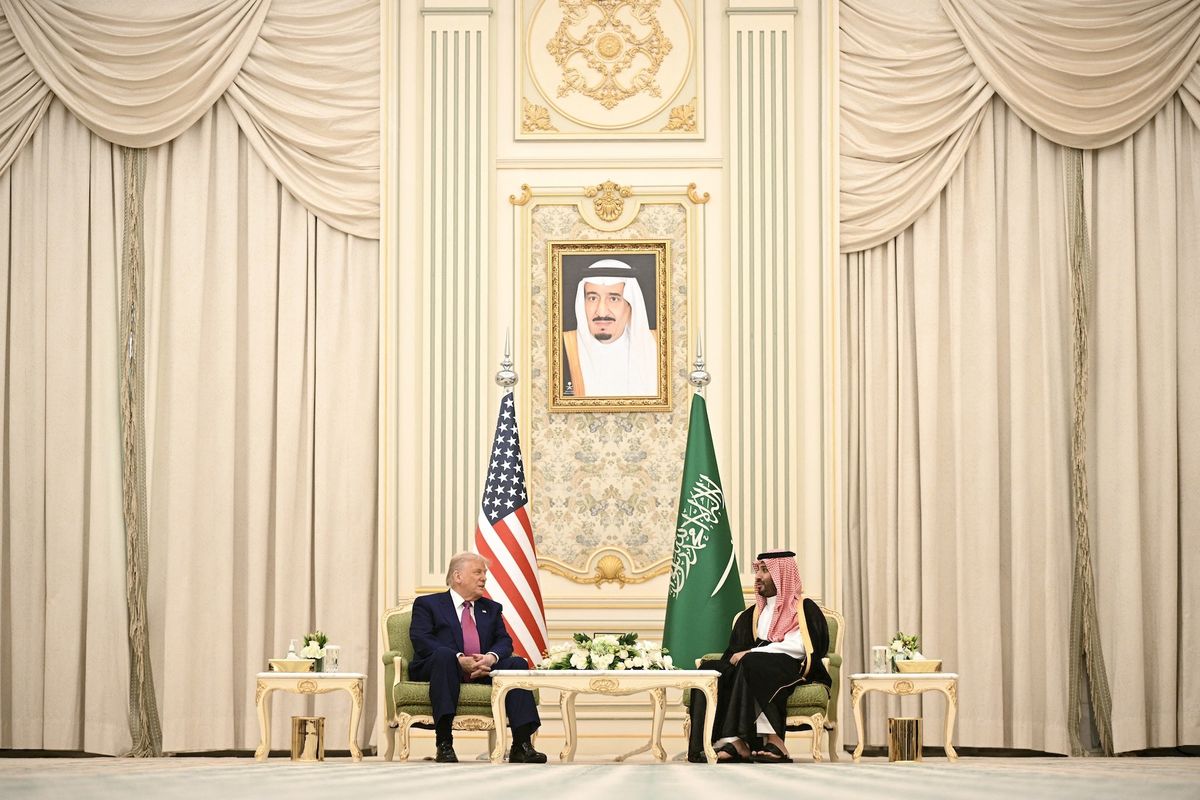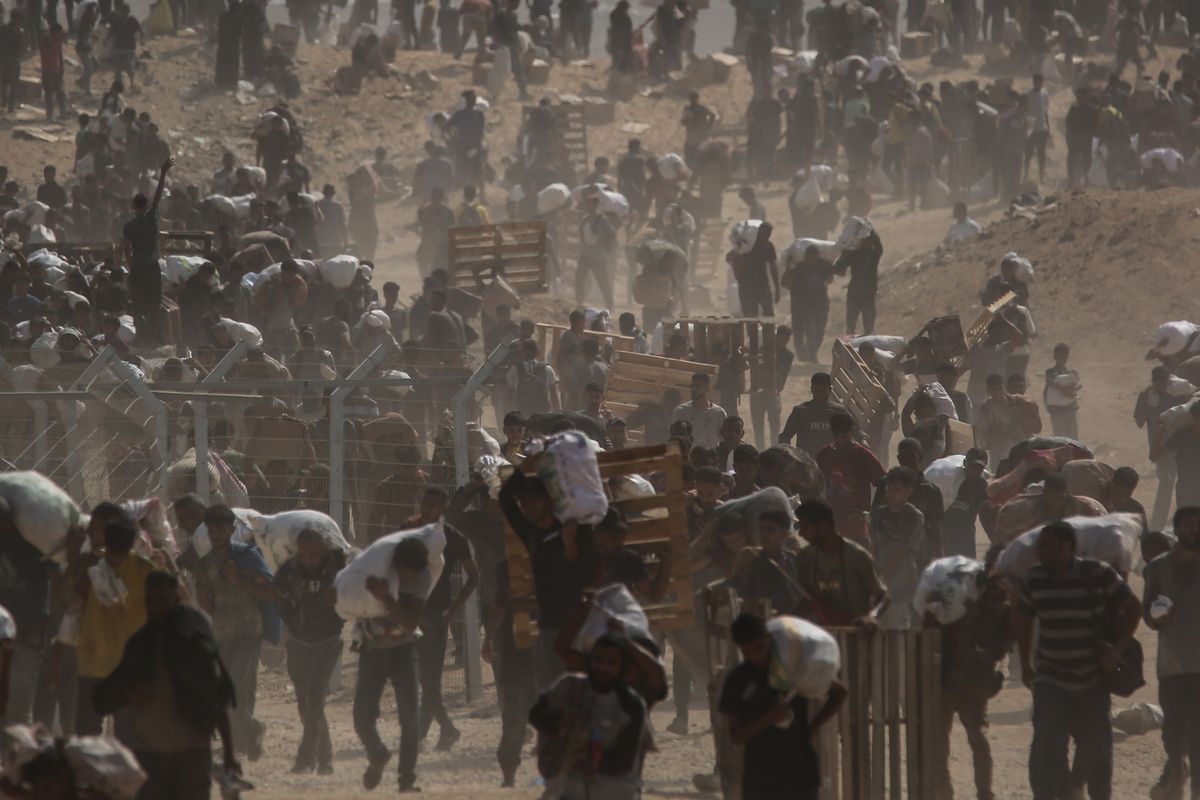The Trump administration is watching the Iranian protests closely – in order to name, shame and eventually sanction those cracking down on protesters and limiting access to social media, senior administration officials told a small group of reporters Wednesday. They wouldn’t say if President Donald Trump might pull out of the Iran nuclear deal because of the crackdown.
The protests caught the Iranian regime off guard – and the Americans too – spreading from Mashhad in northeastern Iran across 26 cities and dozens of smaller towns and villages, the officials said, speaking to a small group of reporters anonymously as a condition of describing the Trump administration’s response.
- The protests started over the economy, possibly ginned up by opponents of President Hassan Rouhani, but “took on a life of [their] own very quickly.” Demonstrations soon railed against Iran’s “whole political and legal system,” the officials said, confirming much that has been publicly reported.
- The current demonstrations are mostly by the “provincial working class, as opposed to the Iranian upper and middle class,” compared to protests that broke out across Iran in 2009 and 2011 were centered among the educated elite.
- The economic issues being opposed—the government’s decision, for example, to raise the price of fuel and food and remove certain subsidies that were introduced during the era of former Iranian President Mahmoud Ahmadinejad—are “structural economic grievances that would be extremely difficult for the regime to satisfy in the near term.”
- The lack of short-term solutions to the economic hardships, combined with the different nature of who is protesting this time vs. 2009, means that “no one can predict what can happen. We’re trying to be humble about that,” one official said.
Trump administration officials debated only briefly about whether to publicly comment on the protests, before Trump signaled his support for the demonstrators – and his break with the Obama administration 2009 wait-and-see policy – by tweeting early and often, to signal to Iran that there would be consequences for cracking down on their own people.
- It took the Obama administration several days to offer public support to the 2009 protesters. Trump officials too weighed whether statements from Trump would do more to harm than help the protesters but decided the regime would try to discredit them as motivated by outside forces anyway, as the top Iranian leaders did this week.
- They decided Iran already has been supporting destabilizing proxies in Syria and Yemen, so U.S. support or criticism now can’t make it any worse, the officials said. “We don’t see an interruption in that trend. They already were so aggressive and reckless.”
- The administration was also aiming by its public statements to rally support from European and other allies, signaling to Iran that there would be a reputational price to be paid in the international community, the officials said. Britain’s Foreign Secretary Boris Johnson the crackdown.
- S. Ambassador to the United Nations Nikki Haley is seeking emergency meetings with the Security Council in New York and the Human Rights Council in Geneva regarding Iran, to further step up pressure on the regime.
The White House is tracking which personnel or units are behind the violent crackdown, and behind trying to limit communication of Iranians with the outside world by slowing or stopping internet access. They will take that data and will “feed it into our sanction machinery” to penalize those responsible. “That requires information, but there’s a lot coming in,” one of the officials said.
- The U.S. has tracked 21 deaths and thousands of arrests.
- The Islamic Revolutionary Guard Corps (IRGC and its Basij Resistance Force) have been the tool for such crackdowns in the past, and reported to have deployed in multiple cities this time.
- The U.S. has found that much of the repression comes from the Supreme Leader Ayatollah Ali Khamenei, who in 29 years in power has created a “personalized dictatorship.”
- The White House has existing authorities, including several different executive orders tied to Iran from 2009 to 2012, that officials can use to punish individuals or institutions responsible for the violence.
- The intent is to change Iranian behavior, not to overthrow Iran’s leadership, the officials insisted. The Iranian people seem to be pushing for a leadership change, however. “There is going to be a window. We don’t know if now is that window for them to make a choice about how they want to organize as a country.”
The use of sanctions as the first line of attack comes from Trump’s Iran policy announced in October. Trump asserted that his administration would be taking a four-pronged approach to Iran, which emphasizes working with allies to counter Iran’s destabilizing activity and support for terrorist proxies, increasing sanctions on Iranian entities, addressing the regime’s proliferation of missiles and weapons, and denying the regime all paths to a nuclear weapon.
- The Trump administration has accused Iran of supplying Houthi rebels in Yemen with missiles that were fired into Saudi Arabia in violation of U.N. Security Council Resolution (UNSCR) 2231.
- During a Dec. 14 press conference held at the U.S. military’s Joint Base Anacostia-Bolling, U.S. Ambassador to the U.N. Haley presented an array of singed missile remnants and other parts that she said constituted “concrete” evidence that Iran had illegally supplied weapons to Houthi rebels.
- Also in October, the U.S. Treasury Department designated the IRGC pursuant to Executive Order 13224 on global terrorism, due to its support for the Iranian Quds Force as well as other designated terrorist groups, including Hezbollah and Hamas. By including the IRGC under this executive order, the Treasury Department can increase sanctions levied against the organization.
- Separate from the protests but related to the Trump policy toward Iran, the Treasury Department Treasury's Office of Foreign Assets Control on Thursday sanctioned "five Iran-based entities subordinate to a key element of Iran's ballistic missile program."
The protests have “no bearing” on the Trump administration’s pending decision to stay in or leave the Iran deal, aka the JCPOA, the officials said. But what the Iranian regime – and its people – do next could dictate how the White House will proceed vis-à-vis Iran.
- As mandated by Congress, the president is required to provide his stamp of approval regarding Iran’s compliance with the JCPOA every 90 days. Despite his strong anti-JCPOA rhetoric, Trump twice – reluctantly – certified that Iran abided by its nuclear commitments. However, on Oct. 13, Trump announced that he would not certify Iran’s compliance for a third time and kicked the potential of implementing additional sanctions on Iran to Congress. The White House emphasized that, although Iran had fulfilled the “technical” aspects of the deal, it was “unquestionably in default of the spirit” of the agreement.
- The next 90-day deadline is looming in mid-January, when Trump must decide whether to again certify or decertify to Congress that Iran is keeping to the terms of the JCPOA. One of the officials said it is unlikely that Trump would certify it this time, after declining last time, but that Iran’s crackdown was one of many elements Trump would be weighing to decide whether to stay in the deal.
Cipher Brief Director of Analysis Bennett Seftel contributed to this report.
This story was updated on Thursday to reflect new U.S. sanctions on Iranian individuals, though apparently unrelated to the ongoing protests.












